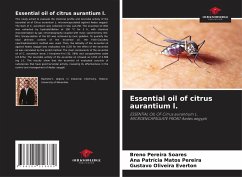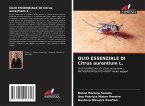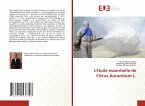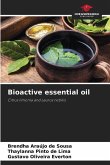This study aimed to evaluate the chemical profile and larvicidal activity of the essential oil of Citrus aurantium L. microencapsulated against Aedes aegypti. The bark of C. aurantium was collected in São Luís-MA. The essential oil (EO) was extracted by hydrodistillation at 100 °C for 3 h, with chemical characterization by gas chromatography coupled with mass spectrometry (GC-MS). Encapsulation of the EO was achieved by ionic gelation. To quantify the total phenolic content of the essential oil, the Folin-Ciocalteu spectrophotometric method was used. Then, the lethality of the essential oil against Aedes aegypti was evaluated, the LC50 for the effect of the essential oil was calculated by the probit method. The main components of the essential oil of C. aurantium were: (-)-terpinen-4-ol (32, 56%) and caryophyllene oxide (23.52%). The larvicidal activity of the essential oil showed an LC50 of 3.589 mg L-1. The results show that the essential oil evaluated consists of substances that have good larvicidal activity, revealing its effectiveness in the control and management of Aedes aegypti.
Bitte wählen Sie Ihr Anliegen aus.
Rechnungen
Retourenschein anfordern
Bestellstatus
Storno








